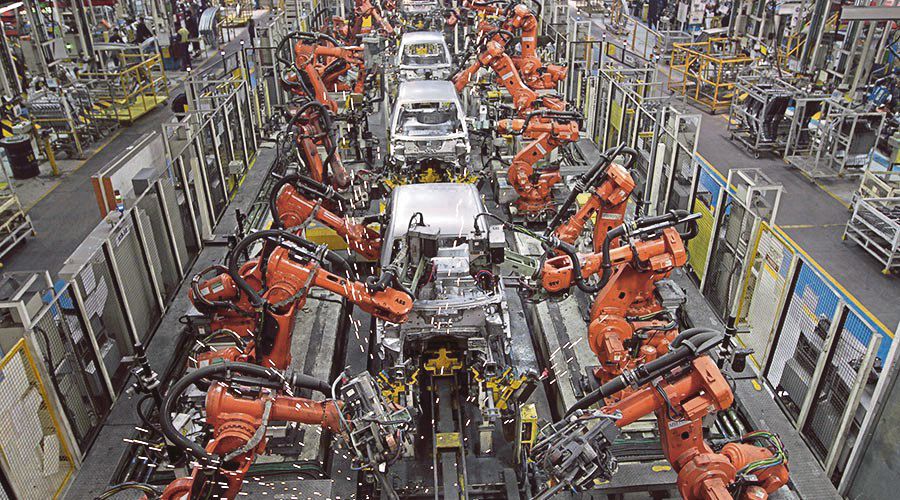“WATCH robot builder construct house in two days.” “New robotic drill performs skull surgery 50 times faster.” “The Washington Post’s robot reporter has published 850 articles in the past year.”
Seeing these news headlines, I instantly recall Elon Musk, who has not been discreet about his worries over the rise of machines. He had warned that: “Robots will be able to do everything better than us”.
Musk is not alone. In fact, many share his worries. Machines of the future can “think” and “act” like humans or, in fact, even better. Future productivity will be higher using robots that are faster, more efficient and function at a lower cost than humans. The rapid advancement and convergence of technologies also mean that the resulting complexity limits the understanding and control of future technologies. Thus, it is understandable that humans are getting more anxious. Facebook recently abandoned an experiment after two robots started creating their own language and successfully communicated with each other, while the conversation remained incomprehensible to their creators.
Although the benefits of automation are very clear, and some countries are racing with each other on their development and application, they come at a price. The World Economic Forum predicted that by 2040, 80 per cent of jobs in the world will be automated. Besides the fear of humans losing jobs to robots, the increase in inequality is another concern, which could lead to various social problems.
Is Malaysia feeling the heat? Although huge numbers of jobs will not disappear overnight, signs of disruption are appearing.
Most companies, regardless of the sector, are transforming systems and relying more on machines and digitalisation. For instance, with Insurtech players emerging in Malaysia, we can expect automation to shake the insurance model the way it disrupted the travel industry.
A study by Khazanah Research Institute shows that 54 per cent of jobs in Malaysia are at high risk of being impacted by automation in the next one to two decades. Alarmingly, almost four out of five of all semi-skilled jobs are at high risk, and 90 per cent of these are held by Malaysians.
However, it is important to realise that the rise of machines does not impact everyone equally and at least four factors contribute to the unequal impact.
The most talked about is the impact according to job type; low-skilled workers are going to be the most affected, followed by semi-skilled workers while the least impacted are highly skilled workers. Some analysts also predict that only a fraction of highly skilled professionals will benefit from the Fourth Industrial Revolution, which further creates income inequality.
Studies also show that education level is a determining factor and lower educated individuals will be most affected. Due to the difference in task and labour costs, impacts on industries also differ. Computers and electronics products, electrical equipment appliances and components, transport equipment and machinery account for the vast majority of global robots.
Lastly, there is the impact based on gender. Worldwide, women are underrepresented in high-tech. Further, women tend to be employed in jobs that are highly automatable such as sales, office or administrative roles. It has been predicted that men stand to gain one job for every three jobs lost to technological advances, while women are expected to gain one job for every five or more jobs lost.
Is Malaysia ready for this massive revolution? What are the strategies we should consider in facing the mysterious future?
First and foremost, efforts should be made in a timely manner and according to the criticality of those impacted. Strategies and actions need to be prioritised to ensure their effectiveness.
Next, guidance on job transition, such as job-search assistance, education and training on emerging skills are needed, as well as access to labour market information. Also, assisting life-long education and re-skilling the affected groups for the jobs of the future; engagement, development, supervision and response to the paradigm shift, can speed up employment.
Third, invest in the next generation via enhancement of the education system. Graduates, even secondary school students, should be prepared for the jobs of the future. Digital education opportunities should be provided to all from early childhood. The best teachers and lecturers should be attracted and retained. Collaboration with industry is important, since it is moving the fastest. Further, due to the rapid growth of technology, required skill sets may also change speedily, thus it is most important to also “learn how to learn”.
Finally, empower women. Encourage women to explore Science, Technology, Engineering and Mathematics, enter high-tech industries and fight gender stereotypes. Everyone loses when women “play small”.
Many countries, including China, the United States and Canada, have come up with strategies to shape their future response to the growth of machine intelligence. When major economies adopt greater automation, it demolishes Malaysia’s labour cost advantage. Furthermore, without technological readiness, the danger of not being a part of the new Global Value Chain is high.
Malaysia needs to manoeuvre the risks we face into opportunities, urgently and uncompromisingly. The threat posed by the rise of the machines is real — it is preposterous for us to play wait and see.
This article first appeared in New Straits Times, 21 November 2017.





